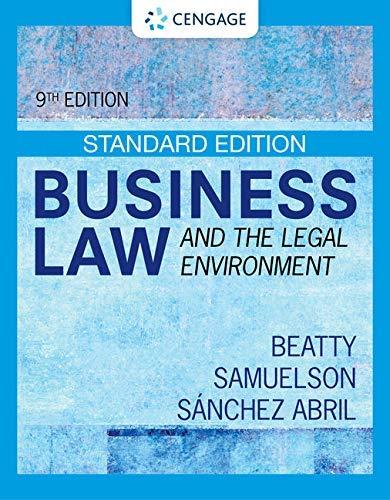Question
Can social-media platforms like Twitter block or remove posts by particular people, based on the person's viewpoint? Generally, media companies are free to publish only
Can social-media platforms like Twitter block or remove posts by particular people, based on the person's viewpoint? Generally, media companies are free to publish only material of their choosing. Media companies routinely restrict the content they wish to publish. In fact, the First Amendment protects their right to do so. Since they are not governmental entities, the First Amendment does not restrict their efforts to limit content that appears in their apps. However, social media is often seen as being different in kind from traditional media, and even other forms of internet media. Texas enacted a law in 2020, HB 20. HB 20 was enacted by the Texas legislature and signed into law by its governor in response to Twitter's blocking of then-President Trump in the aftermath of the January 6, 2021 attack on the U.S. Capitol. The law prohibits social-media platforms from blocking or removing posts based on the speaker's viewpoint. The law was upheld in a split decision by the U.S. Fifth Circuit Court of Appeals in September 2022 and is likely headed to the U.S. Supreme Court. That means that the Fifth Circuit's decision by no means settles the issue.
If you select this assignment, you will:
- Describe the issue: why do Twitter and other social media platforms remove content posted by particular political speakers? What is the current state of affairs concerning this issue? Have other states adopted similar measures?
- Research, identify and discuss the major positions for and against allowing social media sites to restrict the content placed on them by members of the public. How do social media platforms justify those actions? Why do proponents of such measures feel that social media companies should be treated differently than other kinds of media?
- Evaluate the competing positions. Do the assumptions and points of view underlying them hold up to analysis?
- Introduction
- Identify the issue about which you are writing
- Provide a brief description about the competing points of view and a summary of your conclusions.
- Background: Describe the issue; why is this an issue that at least some people believe requires a legal remedy? What are the facts underlying the issue?
- State of the Law:
- what is the current state of the law regarding your issue?
- Do courts agree on the way in which this issue should be resolved? Have other positions and/or solutions to the particular problem been proposed or adopted? For example, proposed or pending legislation or litigation. If so, what are they?
- Analysis: Assess the competing viewpoints. Do the assumptions and points of view underlying them hold up to analysis?
- Conclusion: this should be a half page or so that summarized your paper.
Step by Step Solution
There are 3 Steps involved in it
Step: 1

Get Instant Access to Expert-Tailored Solutions
See step-by-step solutions with expert insights and AI powered tools for academic success
Step: 2

Step: 3

Ace Your Homework with AI
Get the answers you need in no time with our AI-driven, step-by-step assistance
Get Started


